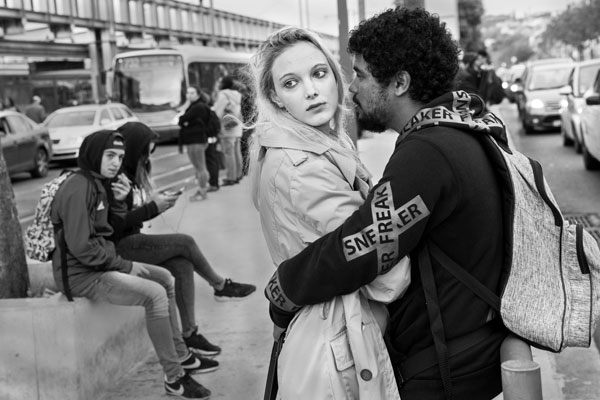Framing Streets Things To Know Before You Buy
Table of ContentsThe Best Strategy To Use For Framing StreetsThe Definitive Guide to Framing StreetsA Biased View of Framing StreetsThe Greatest Guide To Framing StreetsFraming Streets - QuestionsFraming Streets Can Be Fun For Anyone
Photography style "Crufts Canine Program 1968" by Tony Ray-Jones Street photography (also in some cases called candid digital photography) is digital photography performed for art or query that includes unmediated chance experiences and arbitrary incidents within public locations, normally with the aim of recording photos at a crucial or emotional minute by careful framework and timing. 
How Framing Streets can Save You Time, Stress, and Money.
Susan Sontag, 1977 Road digital photography can concentrate on individuals and their behavior in public. In this respect, the road professional photographer resembles social docudrama professional photographers or photojournalists that likewise operate in public areas, but with the goal of recording relevant events. Any of these professional photographers' images may capture individuals and building visible within or from public areas, which commonly requires navigating moral issues and laws of personal privacy, security, and residential property.
Depictions of daily public life develop a genre in nearly every duration of world art, starting in the pre-historic, Sumerian, Egyptian and early Buddhist art durations. Art dealing with the life of the street, whether within views of cityscapes, or as the leading motif, shows up in the West in the canon of the North Renaissance, Baroque, Rococo, of Romanticism, Realism, Impressionism and Post-Impressionism.
Rumored Buzz on Framing Streets
Louis Daguerre: "Blvd du Temple" (1838 or 1839) In 1838 or 1839 the initial photo of figures in the street was tape-recorded by Louis-Jacques-Mand Daguerre in among a pair of daguerreotype views taken from his workshop home window of the Blvd du Holy place in Paris. The 2nd, made at the elevation of the day, shows an uninhabited stretch of street, while the other was taken at regarding 8:00 am, and as Beaumont Newhall records, "The Blvd, so continuously loaded with a moving bunch of pedestrians and carriages was flawlessly solitary, except an individual who was having his boots brushed.
As a result his boots and legs were well defined, yet he lacks body or head, since these remained in activity." Charles Ngre, waterseller Charles Ngre. https://giphy.com/channel/framingstreets1 was the very first professional photographer to achieve the technical sophistication needed to sign up people in motion on the road in Paris in 1851. Digital Photographer John Thomson, a Scotsman functioning with reporter and social protestor Adolphe Smith, published Street Life in London in twelve monthly installations beginning in February 1877
The Buzz on Framing Streets
Eugene Atget is considered as a progenitor, not due to the fact that he was the first of his kind, but as an outcome of the popularisation in the late 1920s of his record of Parisian streets by Berenice Abbott, who was inspired to take on a similar documentation of New York City. [] As the city created, Atget assisted to promote Parisian streets as a deserving topic for digital photography.

Unknown Facts About Framing Streets
Martin is the first recorded digital photographer to do so in London with a disguised cam. Mass-Observation was a social study organisation started in 1937 which intended to tape-record day-to-day life in Britain and to videotape the responses of the 'man-in-the-street' to King Edward VIII's abdication in 1936 to marry divorce Wallis Simpson, and the sequence of George VI. The principal Mass-Observationists were anthropologist Tom Harrisson in Bolton and poet Charles Madge in London, and their first report was created as guide "May the Twelfth: Mass-Observation Day-Surveys 1937 by over two hundred observers" [] Home window cleaner at Kottbusser Tor, Berlin, by Elsa Thiemann c. 1946 The post-war French Humanist College photographers discovered their subjects on the road or in the restaurant. Between 1946 and 1957 Le Groupe des XV annually displayed work of this kind. Andre Kertesz. Circus, Budapest, 19 May 1920 Road digital photography developed the significant material of 2 exhibits at the Gallery of Modern Art (Mo, MA) in New york city curated by Edward Steichen, 5 French Photographers: Brassai; Cartier-Bresson, Doisneau, Ronis, Izis in 1951 to 1952, and Post-war European Photography in 1953, which exported the idea of road photography globally.

Some Known Incorrect Statements About Framing Streets
The recording device was 'a concealed cam', a 35 mm Contax hidden beneath his coat, that was 'strapped to the upper body and linked to a long cord strung down the appropriate sleeve'. His job had little look at this now contemporary effect as due to Evans' sensitivities about the creativity of his task and the privacy of his topics, it was not published up until 1966, in the publication Several Are Called, with an introduction written by James Agee in 1940.
Helen Levitt, then an educator of young kids, linked with Evans in 193839. She documented the transitory chalk illustrations - Street photography hashtags that were component of youngsters's road culture in New York at the time, in addition to the kids that made them. In July 1939, Mo, MA's new digital photography section included Levitt's operate in its inaugural exhibitRobert Frank's 1958 book,, was considerable; raw and often indistinct, Frank's pictures examined traditional digital photography of the moment, "challenged all the formal policies set by Henri Cartier-Bresson and Pedestrian Evans" and "contradicted the wholesome pictorialism and sincere photojournalism of American magazines like LIFE and Time".